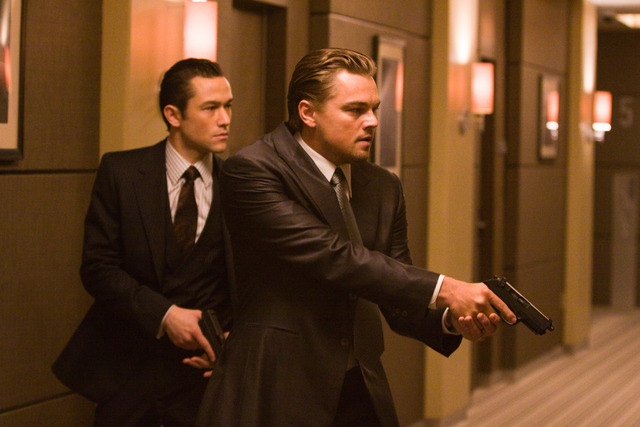Movie rating board: PG-13 intended as strong warning to parents
NEW YORK — Under increasing pressure over its threshold for violence in PG-13 films, the Motion Picture Association of America defended its often-criticized rating system on Wednesday.
A study by the Annenberg Public Policy Center and the Ohio State University recently published in the medical journal Pediatrics found that gun violence in the most popular PG-13 releases since 1985 has tripled in frequency. The number of scenes featuring gun violence in PG-13 films, the study found, has come to rival or even surpass the rate of such sequences in R-rated movies.
The association’s ratings board is no stranger to criticism, but the study — seemingly lending evidence to a long-held claim that the board is softer on violence than sexuality or language — has set off calls for reform.
In the MPAA’s first response to the study, Joan Graves, head of the MPAA’s ratings board, told The Associated Press on Wednesday that the MPAA is in line with parents’ standards.
“We try to get it right,” Graves said. “The criticism of our system is not coming from the parents, who are the people we’re doing this for.”
The association has five ratings classifications, from G to NC-17, but the continental divide is between PG-13 (in which parents are “strongly cautioned” that some material may be inappropriate for children under the age of 13) and R (in which children under 17 are required to be accompanied by a parent or adult guardian).
In between, battle lines are drawn over violence, language and sexual content — a fraught distinction because it determines what kids can see on their own, thus heavily influencing a film’s potential audience. Critics claim that the MPAA is far more permissive of violence in PG-13 films than fleeting nudity or a handful of expletives.
“It may be time to rethink how violence is treated in movie ratings,” said Dan Romer of the Annenberg Center.
But Graves claims PG-13 “is not a namby-pamby rating,” but intended as a strong warning to parents.
The MPAA frequently points out that it doesn’t police films but assigns warning labels for parents so they can make their own choices about what their children see. The ratings system is a voluntary one for theatrical released films that the movie industry founded in the 1960s to replace the far more restrictive Hays Code.
But the current ratings system has persistently drawn criticism for its perceived prudishness, while yielding more easily to the violence in big studio releases, such as Christopher Nolan’s PG-13 rated “Dark Knight” trilogy. Kirby Dick’s 2006 documentary, “This Film Is Not Yet Rated,” leveled claims of censorship at the MPAA ratings board.
On Wednesday, the MPAA granted the Weinstein Co.’s “Philomena” a PG-13 rating after initially giving it an R because of two expletives. Harvey Weinstein, who has frequently battled the ratings board, enlisted the film’s stars, Judi Dench and Steve Coogan, in a series of comedic online videos protesting the MPAA.
“The MPAA’s stance on language often proves itself to be too black and white, not taking into account a film’s overall subject matter,” Weinstein Co. attorney Bert Fields said.
Graves said parents more frequently object to language or sex in movies, and that “they feel they’re getting the correct information about the violence.”
But violence in film and video games has become an increasingly hot topic in the wake of numerous school shootings. Studies have shown conflicting results on whether watching violent movies has any effect on real-life violence. In January, President Barack Obama called for further research on the connection between media and violence.
Graves said the association is aware of school shootings and other violence and the debate on the possible connection to violence in movies. She said the association is open to making adjustments.
“Certainly, it’s always under consideration. It’s not a static thing, ever,” she said.
The PG-13 rating began as a narrow in-between classification, introduced in 1984 following complaints of a heart-yanking scene in “Indiana Jones and the Temple of Doom.” But it has grown into Hollywood’s favorite rating.
Six of this year’s top 10 films are PG-13 rated, including the biggest box-office hit, “Iron Man 3.” Since the Annenberg-Ohio State study focused on the top 30 films at the box office each year, it perhaps says as much about audience tastes as it does about Hollywood.
Graves said that effects-heavy films — particularly comic book films — have introduced a less realistic kind of violence that’s neither graphic nor brutal: “There are so many more ways of putting (violence) on the screen than there were two decades ago.”
“There is more violence,” said Graves, who allowed for the possibility that another ratings category could evolve.
Some have chosen to opt out of the MPAA’s guidelines. When the sensual coming-of-age story “Blue Is the Warmest Color,” which features a lengthy lesbian lovemaking scene, opened in theaters last month, a handful of movie theaters, including New York’s IFC Center, chose to allow “high-school age patrons” despite the MPAA’s NC-17 rating.
The theaters felt a movie about teenagers deserved to be seen by teenagers.























